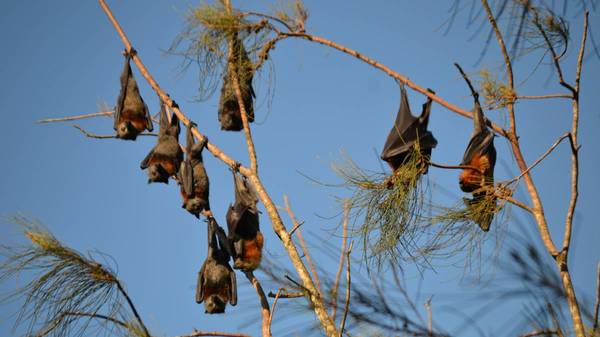NOOSA residents driven batty by flying fox colonies will soon be one step closer to peace with the Queensland Government announcing a $2.7 million research program to better understand the noisy critters.
Environment Minister Dr Steven Miles announced the plans on Saturday 11 June, saying the funding will be delivered over three years to help local councils monitor little-red flying fox movements and improve management of roosts in urban areas.
Dr Miles said the government recognised the need to manage urban flying fox roosts to address community concerns while ensuring the long-term survival of the species in the wild.
“We recognise that some flying fox roosts in built-up areas need intervention to protect residents from nuisance impacts such as smell and noise,” he said.
“We also recognise the vital role played by flying foxes in pollinating native plants and maintaining forest health.
“We also acknowledge that while councils can move roosts on, they have no control over where they go next. So understanding their movements will make sure councils aren’t just shuffling a problem around their community or to a neighbouring council.”
The program will start later this year in Charters Towers in North Queensland and will use GPS transmitters and satellite monitoring to track flying fox movements.
Dr Miles said information gained from this work would guide future decision-making and approaches to the management of flying fox roosts in urban areas.
Australian Bat Clinic director Trish Wimberley said the research would be invaluable.
“It is important councils have science-based education and knowledge if and when it becomes necessary to move or maintain flying fox camps in local suburbs,” she said.
Dr Miles said the government would continue to allow councils to take action to address flying fox roosts but “any future decisions must be scientifically sound and not put flying fox populations at risk”.
Mayor Tony Wellington said the Noosa Council was happy to participate in scientific research that aided an understanding of Flying Foxes.
“Flying-foxes are known to travel over large distances, and to move regularly between camp sites. Indeed it is that highly nomadic behaviour that makes them so difficult to manage,” Cr Wellington said.
“Previous studies based here on the Sunshine Coast using radio tracking devices on Grey-headed Flying-foxes have illustrated just how unpredictable their movements can be. Research into Little-Red Flying-fox movements will add to the current information available about these animals.
“As Minister Miles notes, it’s important to understand whether actions by one local government aren’t simply making things worse for other local government areas.”
Get the latest news to your email inbox FREE!
REGISTER






